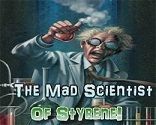Meng Model 1/35 French FT-17 Light Tank (Riveted Turret)
Meng Model 1/35 French FT-17 Light Tank (Riveted Turret)
The world's first modern tank
Tank development went on at the same pace in Great Britain and in France in 1915. When "Little Willie" had already passed all its tests, so had the French Schneider CA-1. This machine was first suggested and conceived by Eugene Brillé, chief engineer of Schneider on the Holt tractor chassis and designed by Col. Estienne, the French "father of the tanks", between May and September 1915. It had to overcome many problems and was first engaged en masse during General Nivelle's offensive of April 1917 at Berry au Bac. It performed poorly, lacking speed, good maintenance, protection, trench crossing ability and was also very cramped. This painful experience made Estienne and other tank enthusiasts in France to think differently, both tactically and technically, and this ultimately led to the development of the Renault FT, a pioneering vehicle whose basic features are still found on modern MBTs.
The idea and concept
The Renault FT was also called "FT 17" although this specific naming was never acknowledged by Renault or any official working on the project. It was to be related to the year 1917, like "modele 1917" as it was customary for many French weapons of the time, but this was introduced after the war. "FT" has no meaning but was the next identification letters available for this project in Renault nomenclature (some authors suggested later "Faible Tonnage" "low tonnage" or "Franchisseur de Tranchées" "trench crosser"). It began as a concept, and became a personal project of Louis Renault, the famous car maker. He sought the ideal weight-to-ratio proportion for a more agile and faster tank than the Schneider CA-1 and the heavy Saint Chamond, and also a cheaper and easier model to produce. All started after a meeting between Colonel Estienne and him at the Hotel Claridge in Paris. Until then, Louis Renault declined any involvement into tank production, claiming his lack of experience with tracked vehicles and other commitments. However, as an engineer he was taken up by the challenge, and after the meeting, started a practical study for a light vehicle, easy to manufacture with a reduced, unskilled workforce (factories had been depleted then by mass drafts and enlisting).
The core idea came from Estienne himself. Instead of cumbersome armored boxes, he imagined an immense fleet of cheap "bees", five or six light tanks for the price of a single St Chamond. Small, fast and narrow, they could, by their sheer number, overwhelm the enemy defense -hence the "swarm of light tank" concept. Knowing the administrative and industrial roadblocks before him, he approached one of the most prominent French industrialists of the time. He also imagined a tank with a power-to-weight ratio good enough to overcome trenches and shell craters, and a fully rotating turret to take full advantage of a single weapon, either a gun or machine-gun. The fully rotating turret was not new. It was used operationally since 1915 on many French armored-cars, Renault, Peugeot and White, and by countless others around the world. The 1905 Charron armored car already used fully revolving turrets.
Development history
The light tank concept was not a natural one for military strategists, despite the fact that it was easier to produce en masse. This was the gamble of Louis Renault, which, with the unwavering support of Col. Estienne directly called for the acceptance of his ideas to the commander in chief, Joffre, but then he was rebuffed by the minister of the armaments and production, Albert Thomas. The latter only agreed for a single prototype. More, when the production get an approval in december 1916, confirmed again in february 1917, the order was postponed due to Nivelle's priority been given to artillery tractors instead.
It was officially only accepted in may 1917 when Pétain replaced Nivelle, but still, the reluctant director of Motor services, general Mourret, was not replaced before september by Louis Loucheur, earning the green light. In the meantime, the prototype delivered in january 1917 performed first trials at Renault's Billancourt factory, before being sent to the Artillerie spéciale proving grounds at Champlieu for corrections. Although performing according to plans, it was later met with scepticism by the commission's officers present at Marly in 22 april. Some asked for a better ventilation, a wider turret and hull, or to raise the ammunition carried to a staggering 10 000 cartridges !. Still, the project had the enthousiastic support of the Consultative Committee of the assault artillery, and General Pétain's arrival on the scene seemed to unlock the situation. He was sold to Estienne's ideas but for different reasons: He saw these a morale-booster for simple soldiers. He ordered later that all the trucks carrying these tanks to the frontline had the mention written to their back plate in large characters "Le meilleur ami de l'infanterie" ("infantry's best friend").
Design
The Renault FT prototype included a rotating turret, a concept already tested with the Little Willie, a rear engine configuration, a front driver, with the turret operator (and commander) right behind. Compared to the short and narrow hull, the modified Holt chassis was big enough to allow sufficient grip on any ground. To manage large trench crossings a rear tail was mounted, which facilitates balance and hanging. Instead of "mobile fortresses" or "land cruisers", the Renaut FT seemed lightly armed, but the turret made it versatile and efficient in most circumstances.
Renault's talented engineer Rodolphe Ernst-Metzmaier designed a narrow riveted box (slightly more than an average shoulders width), with flat sides, pointed noise and sloped rear. All available internal space was used, with almost no room to spare. The engine was located at the rear, and separated from the fighting compartment by a firewall. The driver sat on the front, his feet acting on the brake and release clutch pedals between the large pair of idler wheels. The commander stood just behind him. At first the standing position was only meant for short-term offensive, but with time, a leather strap was fixed on both sides, as an improvised sitting. However, the commander still had to stand up to use his narrow cupola, which could revolve at 360° and was completely removable if needed. The crew accessed the tank through the front, through a two-doors hatch, and collapsible upper vision armored panel. The commander could exit from the rear turret hatch, a feature which became mainstream on French tanks. The driver had three vision slits, one on the collapsible panel, two on the sides.
The Renault 4-cylinder air-cooled petrol engine was started either by a rear crank or an internal one. It was handily reachable from above, protected by a large hood. The petrol tank was installed after the turret and before the engine, high for gravity and well-protected except from above. A steel chain was usually suspended on the rear tail in order to be used for towing another vehicle. Large metal boxes were suspended on the flanks, with shovels, picks, spanner and other tools, as well as sometimes additional fuel tanks and spare track links. There was no means of communication between the turret operator and driver and the interior was almost deafeningly noisy, so a kind of "kicking code" in the back, shoulders or even head of the driver was used to transmit steering orders. These were armed with a Puteaux M19 37 mm (1.45 in) short-barreled, low-velocity gun, or a coaxial Hotchkiss 7.92 mm (0.31 in) machine gun.
Production (1917-18)
The prototype was examined by a commission, but almost cancelled in favor of the new Char 2C heavy tank, which never made its appearance before the armistice. After a few mass-production modifications on the prototype, the first wave was ordered in December 1916 for deliveries in February 1917, but amended, then suspended, and was still in jeopardy in May, despite the arrival of Pétain. It was not until September 12 that the new armament minister Louis Loucheur took Thomas's office, and the project it was definitely approved. Under Charles-Edmond Serre's supervision, the first 84 machines were delivered prior to the end of 1917, and 2697 more until November 1918. This was, by far, the largest tank production by any country at that time, but caused problems to Renault which was still not ready to fulfill such orders and convinced other firms to share the lot, like Berliet at Lyon, and (Schneider) Somua and Delaunay Belleville. It was proposed as a licence to foreign countries as well, and the US industry was first in line, the federal government receiving a single tank and complete plans for 1200 more, both to cover the needs of the French and US Army.
Renault produced two variants of the FT, the "female", or machine-gun model, which was more common, and the "male", armed with a short-barreled 37 mm (1.45 in) Puteaux SA-18 gun. Those models also differed by their definitive "Omnibus" turret, multi-faceted (standard) or rounded with bent metal plates, also known as the "Girod turret" first introduced by Berliet (hence the "Berliet turret"). By December 1917 3100 FTs were to be produced with the Omnibus turret, in both types, as well as 700 derived BS versions (fitted with a short 75 mm howitzer) and 200 TSF, radio versions. In January 1918, the order was again shifted for 1000 "female", 1850 "male", 970 BS (howitzer versions) and 200 TSF. In October the total order has reached a staggering 7820 machines. In November the armistice came and the order was cancelled, 1850 had been delivered so far by Renault, 800 by Berliet, 600 by Somua, and 280 by Delaunay-Belleville. The largest turret manufacturer was Paul Girod Aciéries at Ugine, which casted, assembled and forged round and octagonal models.
Problems were experienced with the armor plates. Many came at the time from Britain, which caused delays due to local priorities. The supply of the new 37 mm Puteaux gun, specially redesigned from a light artillery gun, was also slow to reach full production. Despite the considerable delays (almost a year) before an effective production started, the first batch was still plagued with defects. About one third of the initial order had to be shipped back to the manufacturer for corrections. There was also a continuous lack of spare parts, which hampered the units' operational capabilities and limited maintenance in the field. The poor quality of the fuel filters in particular, and the highly sensitive fan belts caused considerable turmoil and up to ten per cent of active vehicles were unfit for service in 1918 because of this, waiting for replacement parts.
In 1919 a new redesigned version was proposed by Renault, including a more powerful engine, a long-barreled Puteaux gun and additional cases fitted in their tracks. It was successfully exported throughout the world. Some of them were immediately put into action, like the Finnish and Polish versions against the Soviets.
War operations of the FT
The small FT was an undeniable success, despite some flaws of the first series, including the radiator fan belt and cooling system problems. Large number of FTs were provided to most Western front units by mid-1918, and they were involved in all major offensives (4356 engagements and 746 lost in action), successfully crossing no man's land and "cleaning" trenches as designed, but also forests. The first operational unit using FTs was the 1st BCL (Batallion de Chars Légers), on 18 February 1918. But only at the end March did this unit receive its full tank complement, although still unarmed. Each battalion counted three companies, with a full strength of 75 vehicles. The majority were MG-armed (41), with 30 gun-armed and up to four TSF, with 3 vehicles in reserve.
Although it was smaller and less impressive than previous tanks, the FT was nevertheless successful, as Estienne had predicted, because so many reached the enemy lines at the same time, overwhelming the German defenses. It was also a tricky target due to its narrow section and small height. It gave confidence to the regular soldiers whom advanced behind it, avoiding most of the punishing machine-gun fire. First engagement occurred in May, 1918 at Foret de Retz, near Soissons. Tactics also involved a combination of gun-equipped "male" tanks to strike machine gun nests and pillboxes, and "females", equipped with a 7.92 mm (0.32 in) Hotchkiss machine gun to finish the job. There, the rotating turret made all the difference. As the production rose and the tactics were refined and codified, a swarm of light tanks was intended to be thrown towards the German lines in the greatest Allied offensive planned for January-February 1919. Of course the armistice put an end to this plan, including a grand total of 12,260 tanks to be built in France, USA, Italy and Great Britain.
The American FT
Soon after the US joined the war, it was considered suitable to equip the newly formed units with provisional French FT tanks. Since the French general staff needed a huge production, US manufacturers were approached. Built under licence and with a revised design, this was later called "6 tons tank M1917" for "model 1917". In fact, an estimated 514 FTs were delivered and 950 M1917 were built under licence (accepted in October 1918), but none were put to action before the end of the war. Later on, in mid-1919, a revised version was produced, the lengthened M1917A1, with minor alterations and a new, more powerful 100 hp (74.6 kW) Franklin petrol engine and an electric starter. Production was assumed by Van Dorn Iron Works, the Maxwell Motor Company, and the C.L. Best Tractor Company. The M1917 formed the basis of the future US Army corp of the early twenties.
A world success
If the United States, which were involved in the war, logically received many FT 17s, other countries also did. The Italians, for example, received 3 which were later copied and modified to produce the FIAT 3000. 24 were also used by the British, for testing. The French alone accepted in active duty during and after the war no less than 3177 machines, which made the French army, by far, the dominant tank force in the world at the time, and remained so nearly twenty years after. Exports, well served by Renault's knowledge of the international market, reached Poland, Finland, Estonia, Lithuania, Romania, Yugoslavia, Czechoslovakia, Switzerland, Belgium, Netherlands, Spain, Brazil, Turkey, Iran, Afghanistan and Japan. These tanks remained in first line many years in these countries, to the point that two Afghan FT17s were found in relative good condition during "Operation Enduring Freedom"! Actually the US still has many M1917s as museum pieces, but none of the original French FT. The only one, previously owned by the Patton Museum of Cavalry and Armor, was turned to the French government at a French request.
Variants
In fact the gun armed variant was sometimes incorrectly dubbed FT 18. Among variants were 188 radio carrying vehicles (Renault TSF), about 40 FT 75 BS, armed with a punishing 75 mm (2.95 in) howitzer to deal with concrete pillboxes, the 13 Japanese modified FT-Ko, the 27 FT CWS built in Poland with French spare parts (also one gas firing model) and about 1580 FT 31, upgraded models with the new Reibel 7.5 mm (0.3 in) machine gun. These were still in use in regional units in September 1939, and many of them were posted outside the metropolis. The "Russkyi Reno" remains unique, but a modified version with a new sprung suspension was built in large numbers during the early twenties. During the interwar period, these Renault FT fought in many events, like the Russian Civil War, the Polish-Soviet War, the Manchurian War, the Chinese Revolution, the Rif War (in Morocco), the Spanish Civil War and the Estonian war.
Camouflage
After some successful experiments with field artillery, French tanks were painted in sophisticated patterns comprising between three and seven different colors, sometimes separated by black strips, known as "tiger pattern". There were not intended to blend the vehicle into the background but to disrupt the shapes for enemy observers. Professional artists, led by Guirand de Scevola, a cubist academic painter, were committed to study visual disruption and apply often complicated patterns, later summarized as the "dazzle". But with the growing production, these patterns were simplified to be applied by unskilled workers right at the factory.
Renault FT specifications:
Dimensions:
4.95(with tail)/4.20 x 1.74 x 2.14 m (16.24/13.77x5.7x7.02 ft)
Total weight:
6.7 tons
Crew 2:
(commander/gunner, driver)
Propulsion:
Renault 4 cyl petrol, 39 hp (24 kW)
Speed:
7 km/h (4.3 mph)
Range/consumption:
65 km (40.38 mi)
Armament Female:
Hotchkiss 7.9 mm (0.32 in) machine gun
Male:
Puteaux AS19 37 mm (1.45 in) gun
Armor:
22 mm (0.87 in)
Total production:
3700 (France)
Here is a video of Gunny checking the tank out:
[youtube]mPkMn158Fwo[/youtube]
Check out more about the tank here:
http://www.tanks-encyclopedia.com/ww1/fr/renault_ft.php
Tank development went on at the same pace in Great Britain and in France in 1915. When "Little Willie" had already passed all its tests, so had the French Schneider CA-1. This machine was first suggested and conceived by Eugene Brillé, chief engineer of Schneider on the Holt tractor chassis and designed by Col. Estienne, the French "father of the tanks", between May and September 1915. It had to overcome many problems and was first engaged en masse during General Nivelle's offensive of April 1917 at Berry au Bac. It performed poorly, lacking speed, good maintenance, protection, trench crossing ability and was also very cramped. This painful experience made Estienne and other tank enthusiasts in France to think differently, both tactically and technically, and this ultimately led to the development of the Renault FT, a pioneering vehicle whose basic features are still found on modern MBTs.
The idea and concept
The Renault FT was also called "FT 17" although this specific naming was never acknowledged by Renault or any official working on the project. It was to be related to the year 1917, like "modele 1917" as it was customary for many French weapons of the time, but this was introduced after the war. "FT" has no meaning but was the next identification letters available for this project in Renault nomenclature (some authors suggested later "Faible Tonnage" "low tonnage" or "Franchisseur de Tranchées" "trench crosser"). It began as a concept, and became a personal project of Louis Renault, the famous car maker. He sought the ideal weight-to-ratio proportion for a more agile and faster tank than the Schneider CA-1 and the heavy Saint Chamond, and also a cheaper and easier model to produce. All started after a meeting between Colonel Estienne and him at the Hotel Claridge in Paris. Until then, Louis Renault declined any involvement into tank production, claiming his lack of experience with tracked vehicles and other commitments. However, as an engineer he was taken up by the challenge, and after the meeting, started a practical study for a light vehicle, easy to manufacture with a reduced, unskilled workforce (factories had been depleted then by mass drafts and enlisting).
The core idea came from Estienne himself. Instead of cumbersome armored boxes, he imagined an immense fleet of cheap "bees", five or six light tanks for the price of a single St Chamond. Small, fast and narrow, they could, by their sheer number, overwhelm the enemy defense -hence the "swarm of light tank" concept. Knowing the administrative and industrial roadblocks before him, he approached one of the most prominent French industrialists of the time. He also imagined a tank with a power-to-weight ratio good enough to overcome trenches and shell craters, and a fully rotating turret to take full advantage of a single weapon, either a gun or machine-gun. The fully rotating turret was not new. It was used operationally since 1915 on many French armored-cars, Renault, Peugeot and White, and by countless others around the world. The 1905 Charron armored car already used fully revolving turrets.
Development history
The light tank concept was not a natural one for military strategists, despite the fact that it was easier to produce en masse. This was the gamble of Louis Renault, which, with the unwavering support of Col. Estienne directly called for the acceptance of his ideas to the commander in chief, Joffre, but then he was rebuffed by the minister of the armaments and production, Albert Thomas. The latter only agreed for a single prototype. More, when the production get an approval in december 1916, confirmed again in february 1917, the order was postponed due to Nivelle's priority been given to artillery tractors instead.
It was officially only accepted in may 1917 when Pétain replaced Nivelle, but still, the reluctant director of Motor services, general Mourret, was not replaced before september by Louis Loucheur, earning the green light. In the meantime, the prototype delivered in january 1917 performed first trials at Renault's Billancourt factory, before being sent to the Artillerie spéciale proving grounds at Champlieu for corrections. Although performing according to plans, it was later met with scepticism by the commission's officers present at Marly in 22 april. Some asked for a better ventilation, a wider turret and hull, or to raise the ammunition carried to a staggering 10 000 cartridges !. Still, the project had the enthousiastic support of the Consultative Committee of the assault artillery, and General Pétain's arrival on the scene seemed to unlock the situation. He was sold to Estienne's ideas but for different reasons: He saw these a morale-booster for simple soldiers. He ordered later that all the trucks carrying these tanks to the frontline had the mention written to their back plate in large characters "Le meilleur ami de l'infanterie" ("infantry's best friend").
Design
The Renault FT prototype included a rotating turret, a concept already tested with the Little Willie, a rear engine configuration, a front driver, with the turret operator (and commander) right behind. Compared to the short and narrow hull, the modified Holt chassis was big enough to allow sufficient grip on any ground. To manage large trench crossings a rear tail was mounted, which facilitates balance and hanging. Instead of "mobile fortresses" or "land cruisers", the Renaut FT seemed lightly armed, but the turret made it versatile and efficient in most circumstances.
Renault's talented engineer Rodolphe Ernst-Metzmaier designed a narrow riveted box (slightly more than an average shoulders width), with flat sides, pointed noise and sloped rear. All available internal space was used, with almost no room to spare. The engine was located at the rear, and separated from the fighting compartment by a firewall. The driver sat on the front, his feet acting on the brake and release clutch pedals between the large pair of idler wheels. The commander stood just behind him. At first the standing position was only meant for short-term offensive, but with time, a leather strap was fixed on both sides, as an improvised sitting. However, the commander still had to stand up to use his narrow cupola, which could revolve at 360° and was completely removable if needed. The crew accessed the tank through the front, through a two-doors hatch, and collapsible upper vision armored panel. The commander could exit from the rear turret hatch, a feature which became mainstream on French tanks. The driver had three vision slits, one on the collapsible panel, two on the sides.
The Renault 4-cylinder air-cooled petrol engine was started either by a rear crank or an internal one. It was handily reachable from above, protected by a large hood. The petrol tank was installed after the turret and before the engine, high for gravity and well-protected except from above. A steel chain was usually suspended on the rear tail in order to be used for towing another vehicle. Large metal boxes were suspended on the flanks, with shovels, picks, spanner and other tools, as well as sometimes additional fuel tanks and spare track links. There was no means of communication between the turret operator and driver and the interior was almost deafeningly noisy, so a kind of "kicking code" in the back, shoulders or even head of the driver was used to transmit steering orders. These were armed with a Puteaux M19 37 mm (1.45 in) short-barreled, low-velocity gun, or a coaxial Hotchkiss 7.92 mm (0.31 in) machine gun.
Production (1917-18)
The prototype was examined by a commission, but almost cancelled in favor of the new Char 2C heavy tank, which never made its appearance before the armistice. After a few mass-production modifications on the prototype, the first wave was ordered in December 1916 for deliveries in February 1917, but amended, then suspended, and was still in jeopardy in May, despite the arrival of Pétain. It was not until September 12 that the new armament minister Louis Loucheur took Thomas's office, and the project it was definitely approved. Under Charles-Edmond Serre's supervision, the first 84 machines were delivered prior to the end of 1917, and 2697 more until November 1918. This was, by far, the largest tank production by any country at that time, but caused problems to Renault which was still not ready to fulfill such orders and convinced other firms to share the lot, like Berliet at Lyon, and (Schneider) Somua and Delaunay Belleville. It was proposed as a licence to foreign countries as well, and the US industry was first in line, the federal government receiving a single tank and complete plans for 1200 more, both to cover the needs of the French and US Army.
Renault produced two variants of the FT, the "female", or machine-gun model, which was more common, and the "male", armed with a short-barreled 37 mm (1.45 in) Puteaux SA-18 gun. Those models also differed by their definitive "Omnibus" turret, multi-faceted (standard) or rounded with bent metal plates, also known as the "Girod turret" first introduced by Berliet (hence the "Berliet turret"). By December 1917 3100 FTs were to be produced with the Omnibus turret, in both types, as well as 700 derived BS versions (fitted with a short 75 mm howitzer) and 200 TSF, radio versions. In January 1918, the order was again shifted for 1000 "female", 1850 "male", 970 BS (howitzer versions) and 200 TSF. In October the total order has reached a staggering 7820 machines. In November the armistice came and the order was cancelled, 1850 had been delivered so far by Renault, 800 by Berliet, 600 by Somua, and 280 by Delaunay-Belleville. The largest turret manufacturer was Paul Girod Aciéries at Ugine, which casted, assembled and forged round and octagonal models.
Problems were experienced with the armor plates. Many came at the time from Britain, which caused delays due to local priorities. The supply of the new 37 mm Puteaux gun, specially redesigned from a light artillery gun, was also slow to reach full production. Despite the considerable delays (almost a year) before an effective production started, the first batch was still plagued with defects. About one third of the initial order had to be shipped back to the manufacturer for corrections. There was also a continuous lack of spare parts, which hampered the units' operational capabilities and limited maintenance in the field. The poor quality of the fuel filters in particular, and the highly sensitive fan belts caused considerable turmoil and up to ten per cent of active vehicles were unfit for service in 1918 because of this, waiting for replacement parts.
In 1919 a new redesigned version was proposed by Renault, including a more powerful engine, a long-barreled Puteaux gun and additional cases fitted in their tracks. It was successfully exported throughout the world. Some of them were immediately put into action, like the Finnish and Polish versions against the Soviets.
War operations of the FT
The small FT was an undeniable success, despite some flaws of the first series, including the radiator fan belt and cooling system problems. Large number of FTs were provided to most Western front units by mid-1918, and they were involved in all major offensives (4356 engagements and 746 lost in action), successfully crossing no man's land and "cleaning" trenches as designed, but also forests. The first operational unit using FTs was the 1st BCL (Batallion de Chars Légers), on 18 February 1918. But only at the end March did this unit receive its full tank complement, although still unarmed. Each battalion counted three companies, with a full strength of 75 vehicles. The majority were MG-armed (41), with 30 gun-armed and up to four TSF, with 3 vehicles in reserve.
Although it was smaller and less impressive than previous tanks, the FT was nevertheless successful, as Estienne had predicted, because so many reached the enemy lines at the same time, overwhelming the German defenses. It was also a tricky target due to its narrow section and small height. It gave confidence to the regular soldiers whom advanced behind it, avoiding most of the punishing machine-gun fire. First engagement occurred in May, 1918 at Foret de Retz, near Soissons. Tactics also involved a combination of gun-equipped "male" tanks to strike machine gun nests and pillboxes, and "females", equipped with a 7.92 mm (0.32 in) Hotchkiss machine gun to finish the job. There, the rotating turret made all the difference. As the production rose and the tactics were refined and codified, a swarm of light tanks was intended to be thrown towards the German lines in the greatest Allied offensive planned for January-February 1919. Of course the armistice put an end to this plan, including a grand total of 12,260 tanks to be built in France, USA, Italy and Great Britain.
The American FT
Soon after the US joined the war, it was considered suitable to equip the newly formed units with provisional French FT tanks. Since the French general staff needed a huge production, US manufacturers were approached. Built under licence and with a revised design, this was later called "6 tons tank M1917" for "model 1917". In fact, an estimated 514 FTs were delivered and 950 M1917 were built under licence (accepted in October 1918), but none were put to action before the end of the war. Later on, in mid-1919, a revised version was produced, the lengthened M1917A1, with minor alterations and a new, more powerful 100 hp (74.6 kW) Franklin petrol engine and an electric starter. Production was assumed by Van Dorn Iron Works, the Maxwell Motor Company, and the C.L. Best Tractor Company. The M1917 formed the basis of the future US Army corp of the early twenties.
A world success
If the United States, which were involved in the war, logically received many FT 17s, other countries also did. The Italians, for example, received 3 which were later copied and modified to produce the FIAT 3000. 24 were also used by the British, for testing. The French alone accepted in active duty during and after the war no less than 3177 machines, which made the French army, by far, the dominant tank force in the world at the time, and remained so nearly twenty years after. Exports, well served by Renault's knowledge of the international market, reached Poland, Finland, Estonia, Lithuania, Romania, Yugoslavia, Czechoslovakia, Switzerland, Belgium, Netherlands, Spain, Brazil, Turkey, Iran, Afghanistan and Japan. These tanks remained in first line many years in these countries, to the point that two Afghan FT17s were found in relative good condition during "Operation Enduring Freedom"! Actually the US still has many M1917s as museum pieces, but none of the original French FT. The only one, previously owned by the Patton Museum of Cavalry and Armor, was turned to the French government at a French request.
Variants
In fact the gun armed variant was sometimes incorrectly dubbed FT 18. Among variants were 188 radio carrying vehicles (Renault TSF), about 40 FT 75 BS, armed with a punishing 75 mm (2.95 in) howitzer to deal with concrete pillboxes, the 13 Japanese modified FT-Ko, the 27 FT CWS built in Poland with French spare parts (also one gas firing model) and about 1580 FT 31, upgraded models with the new Reibel 7.5 mm (0.3 in) machine gun. These were still in use in regional units in September 1939, and many of them were posted outside the metropolis. The "Russkyi Reno" remains unique, but a modified version with a new sprung suspension was built in large numbers during the early twenties. During the interwar period, these Renault FT fought in many events, like the Russian Civil War, the Polish-Soviet War, the Manchurian War, the Chinese Revolution, the Rif War (in Morocco), the Spanish Civil War and the Estonian war.
Camouflage
After some successful experiments with field artillery, French tanks were painted in sophisticated patterns comprising between three and seven different colors, sometimes separated by black strips, known as "tiger pattern". There were not intended to blend the vehicle into the background but to disrupt the shapes for enemy observers. Professional artists, led by Guirand de Scevola, a cubist academic painter, were committed to study visual disruption and apply often complicated patterns, later summarized as the "dazzle". But with the growing production, these patterns were simplified to be applied by unskilled workers right at the factory.
Renault FT specifications:
Dimensions:
4.95(with tail)/4.20 x 1.74 x 2.14 m (16.24/13.77x5.7x7.02 ft)
Total weight:
6.7 tons
Crew 2:
(commander/gunner, driver)
Propulsion:
Renault 4 cyl petrol, 39 hp (24 kW)
Speed:
7 km/h (4.3 mph)
Range/consumption:
65 km (40.38 mi)
Armament Female:
Hotchkiss 7.9 mm (0.32 in) machine gun
Male:
Puteaux AS19 37 mm (1.45 in) gun
Armor:
22 mm (0.87 in)
Total production:
3700 (France)
Here is a video of Gunny checking the tank out:
[youtube]mPkMn158Fwo[/youtube]
Check out more about the tank here:
http://www.tanks-encyclopedia.com/ww1/fr/renault_ft.php
I build bad models so you can feel good about yourself! 
Re: Meng Model 1/35 French FT-17 Light Tank (Riveted Turret)
I'm pretty excited about this build as it's my first go at a Meng kit. Detail looks good and the molding is quite crisp.
Sprue shots

x2
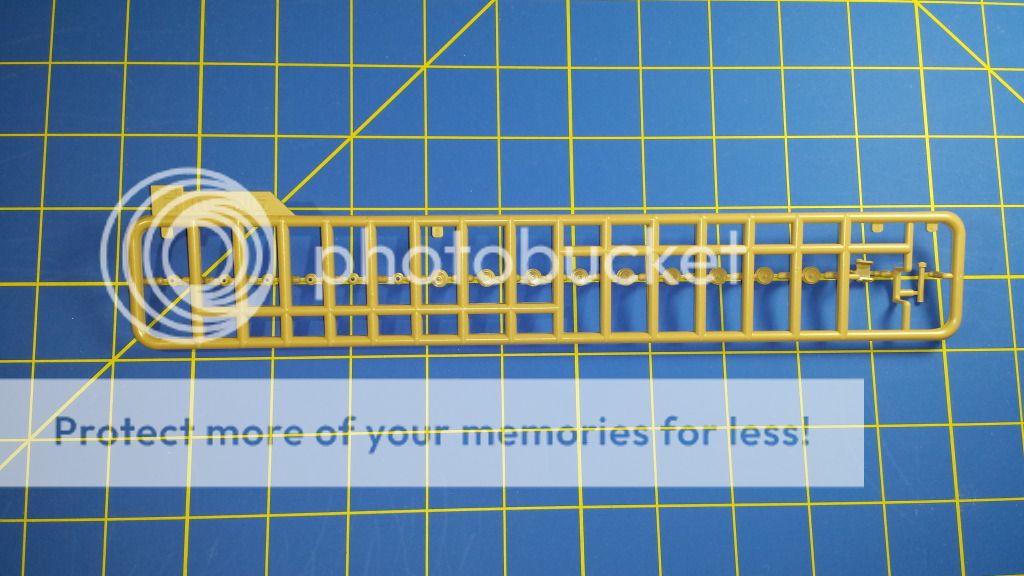

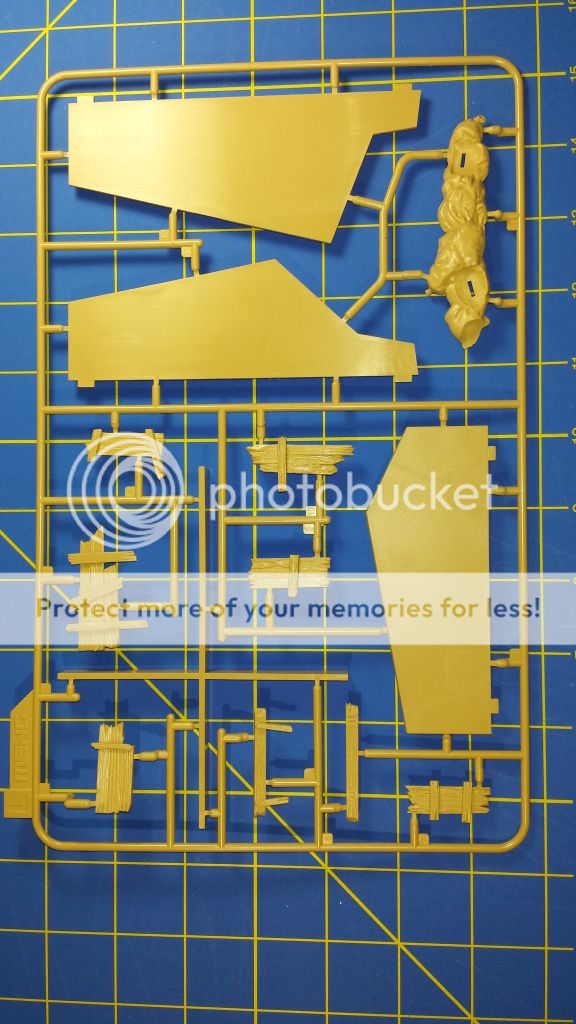


That detail!
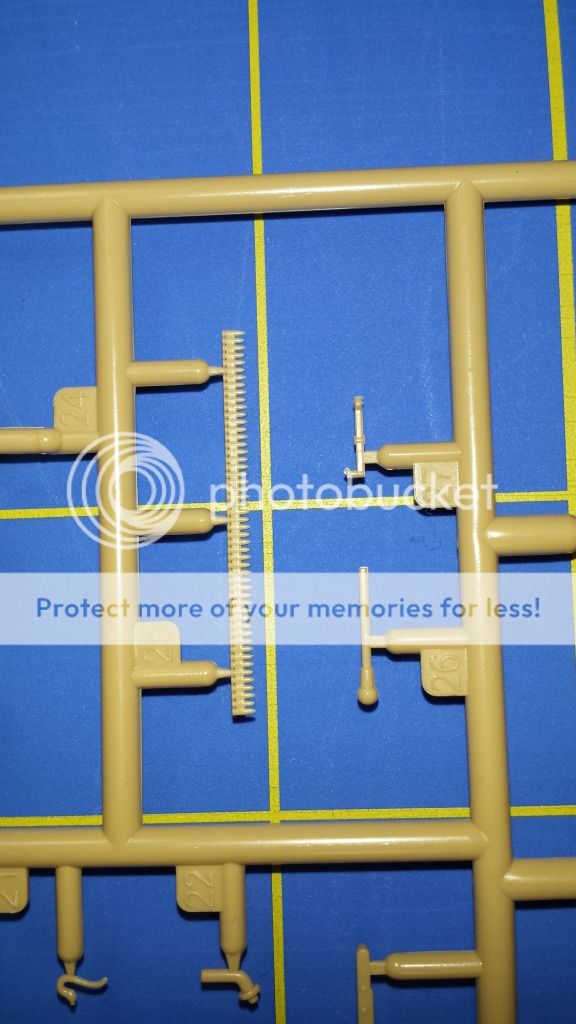
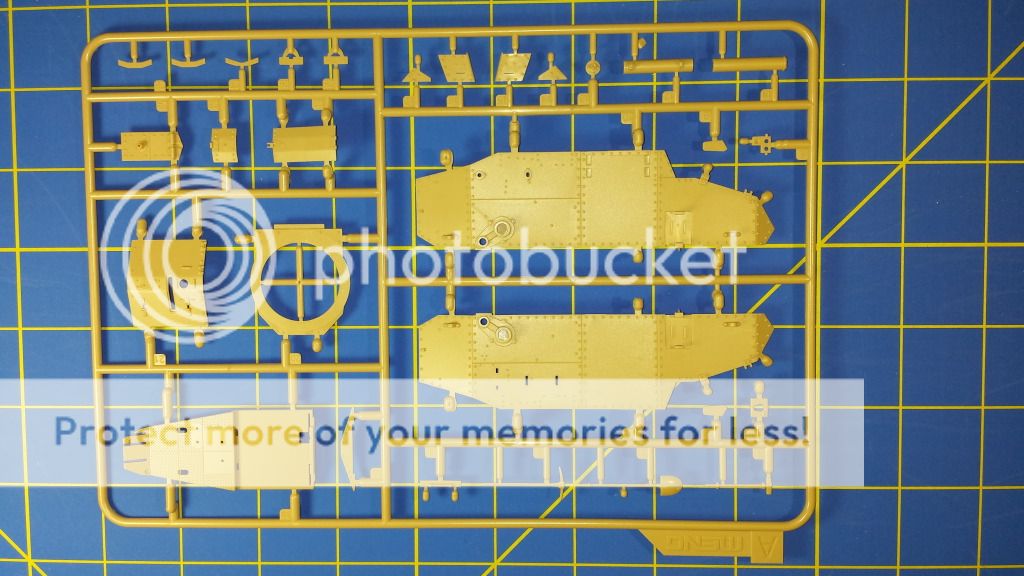

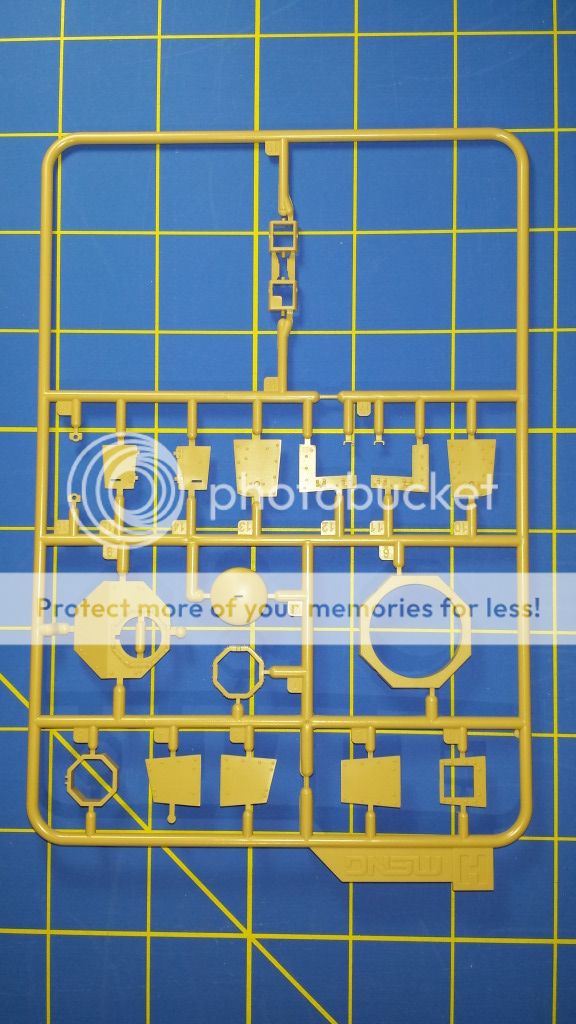
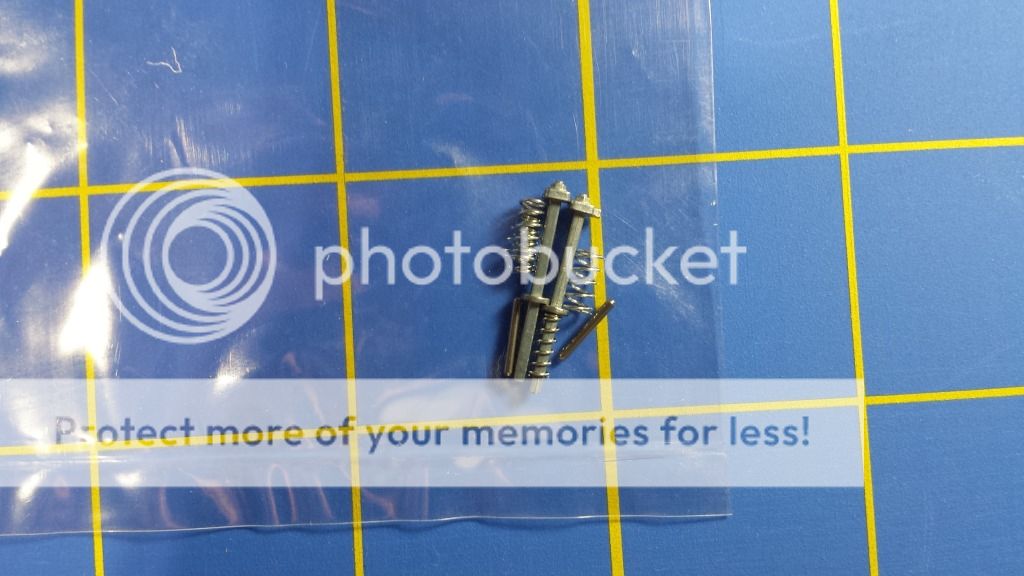

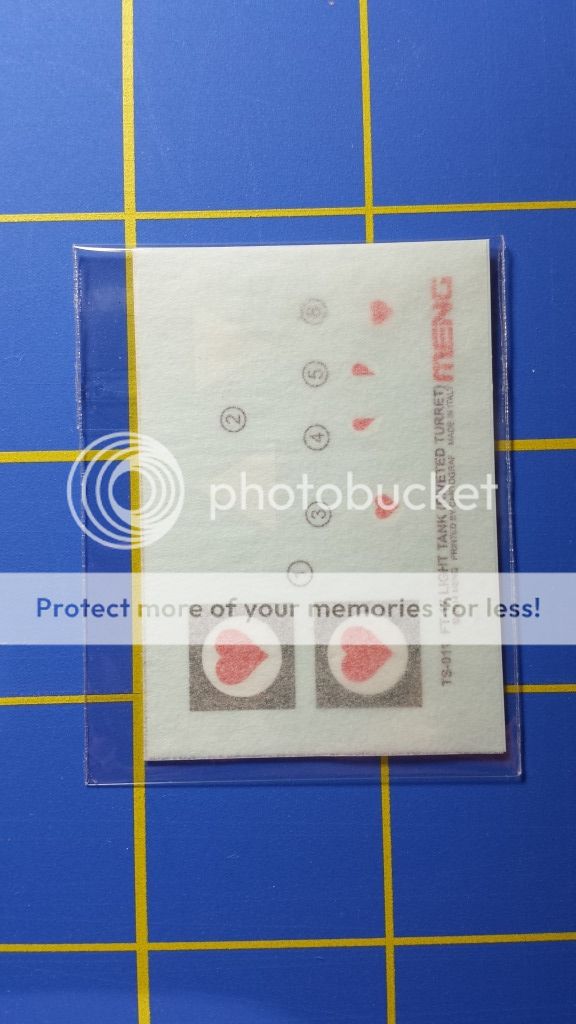


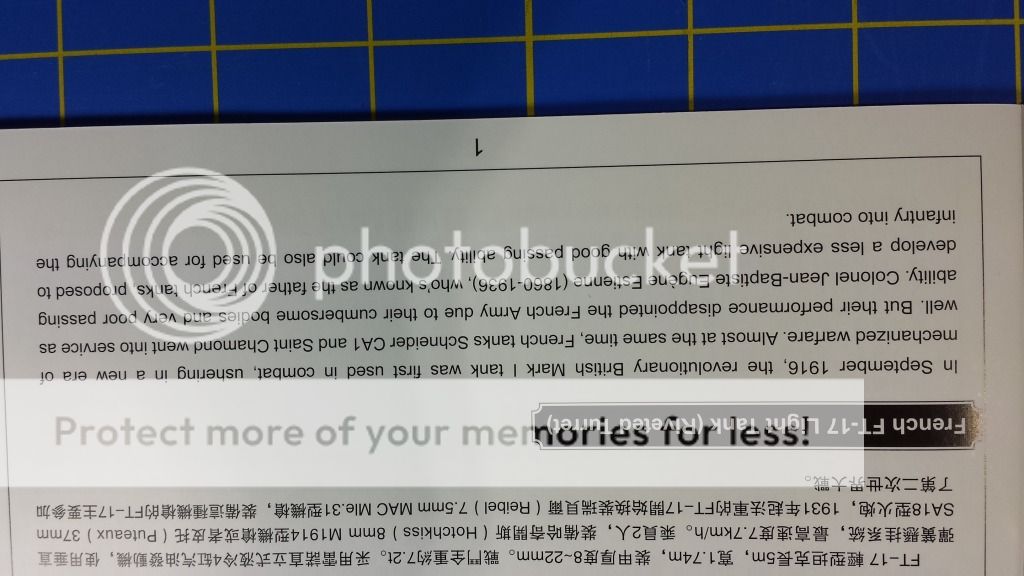





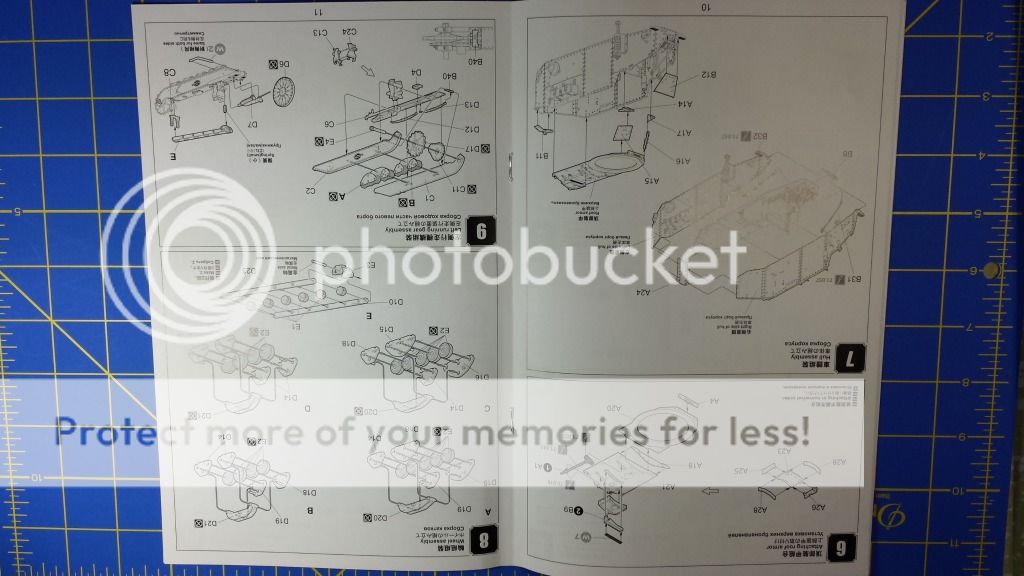
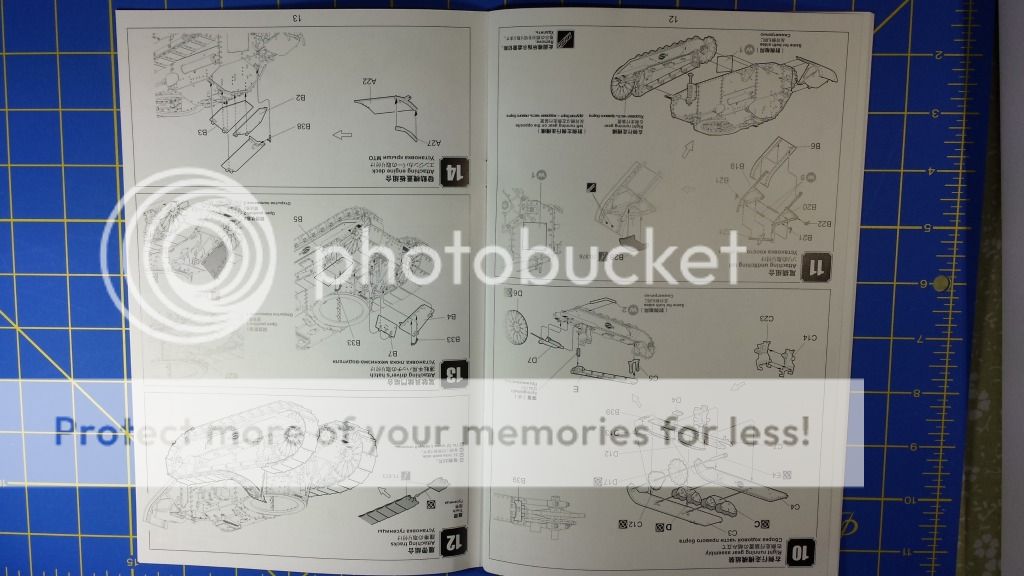
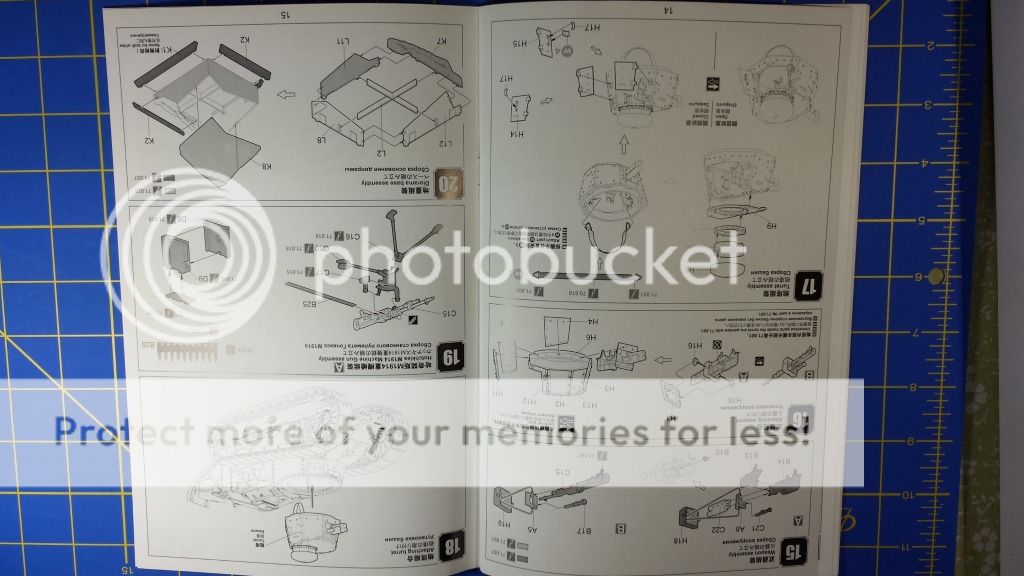
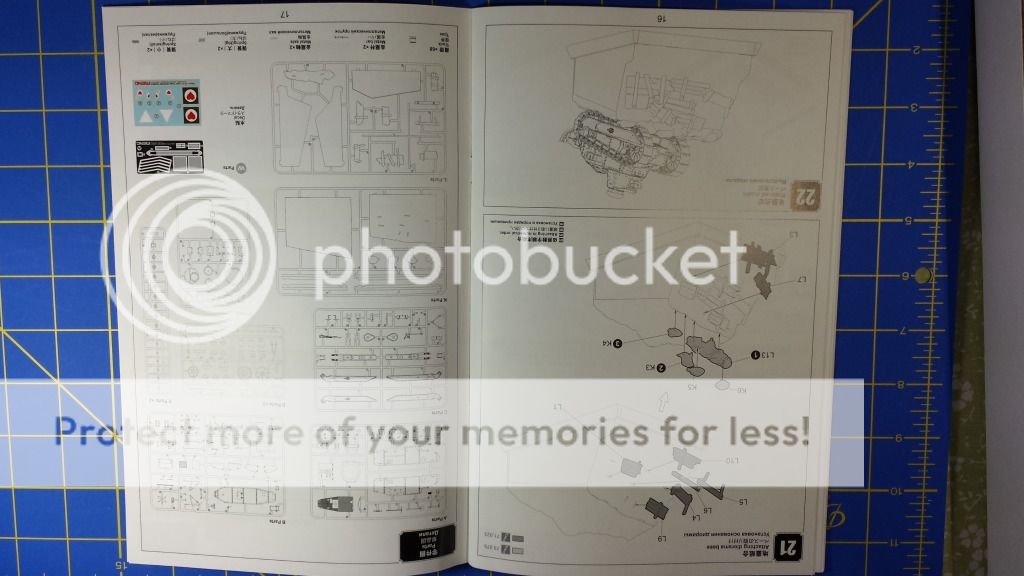

Vallejo colors so a paint conversion chart will be needed.
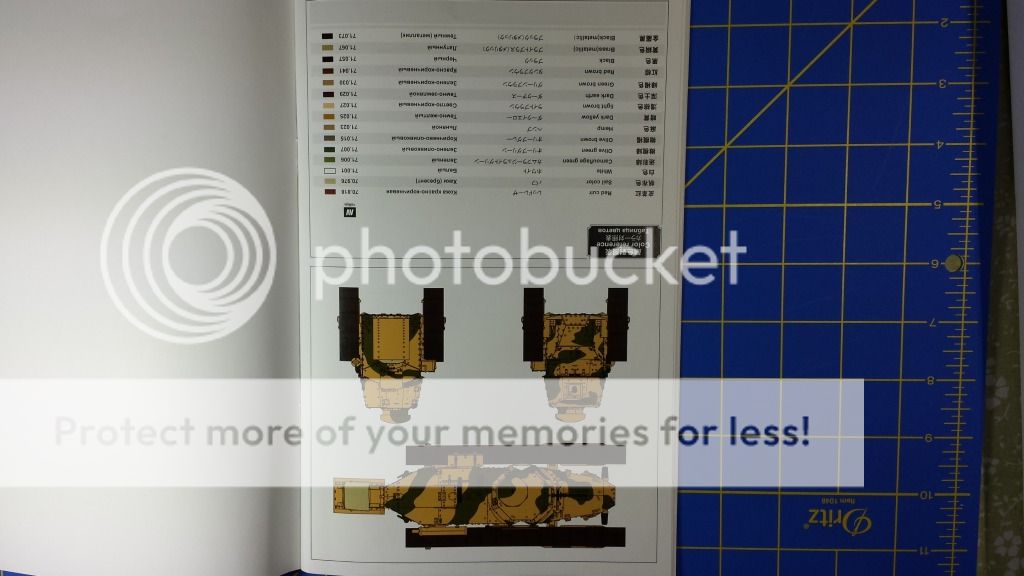
Sprue shots

x2





That detail!




















Vallejo colors so a paint conversion chart will be needed.

I build bad models so you can feel good about yourself! 
-
Jamesday1998
- Staff Sergeant

- Posts: 237
- Joined: Sun Sep 15, 2013 3:02 pm
Re: Meng Model 1/35 French FT-17 Light Tank (Riveted Turret)
damn that looks like a great kit i am looking forward to the build!
the kit is meng so it will go together nice but good luck any way!

the kit is meng so it will go together nice but good luck any way!
'no enemy plane will fly over the reich territory' Hermann Goering
my youtube
[url]channel/UCjsWN0yCUomvHeky43d8mog[/url]
my youtube
[url]channel/UCjsWN0yCUomvHeky43d8mog[/url]
Re: Meng Model 1/35 French FT-17 Light Tank (Riveted Turret)
So far it is a great kit will exceptional detail. The damn thing is just so tiny. Someone needs to make a 1/16 version. It'd also kinda be hilarious to see it in 1/72. It would probably fit on someones thumb.Jamesday1998 wrote:damn that looks like a great kit i am looking forward to the build!
the kit is meng so it will go together nice but good luck any way!
I build bad models so you can feel good about yourself! 
- wappynutter
- Chief Warrant Officer 3

- Posts: 2256
- Joined: Mon Jun 17, 2013 11:39 pm
- Location: Sutton in Ashfield, Nottinghamshire. UK

Re: Meng Model 1/35 French FT-17 Light Tank (Riveted Turret)
Yay!! another FT-17.... 
Thats 2 to watch now...... shame they both the same Meng kit but Hey-Ho......
Cannot wait to see how you tackle this.... Hopefully we will get to see two different approaches and build styles...
Good luck, Coen mentions the plastic is a little brittle so go steady Rob...
All the best..

Thats 2 to watch now...... shame they both the same Meng kit but Hey-Ho......
Cannot wait to see how you tackle this.... Hopefully we will get to see two different approaches and build styles...
Good luck, Coen mentions the plastic is a little brittle so go steady Rob...
All the best..
Re: Meng Model 1/35 French FT-17 Light Tank (Riveted Turret)
I assure you that Coen's build will destroy mine. This was the less expensive of the FT-17s and at the time funds were low which is why I got this kit for the GB.wappynutter wrote:Yay!! another FT-17....
Thats 2 to watch now...... shame they both the same Meng kit but Hey-Ho......
Cannot wait to see how you tackle this.... Hopefully we will get to see two different approaches and build styles...
Good luck, Coen mentions the plastic is a little brittle so go steady Rob...
All the best..
I haven't noticed that the plastic is brittle but rather quite soft. Which honestly is both a pain and a godsend with this kit. The tank is small. Really freaking small and so a lot of the parts are tiny. The parts seem to clean up quite well with a knife.
When I was building the Hobby Boss M4 HST the plastic seemed quite brittle and I snapped quite a few parts. I haven't done so yet on this kit (knock on wood).
But I would trust Coen's word over mine. He's the pro tank builder. Not I.
I build bad models so you can feel good about yourself! 
Re: Meng Model 1/35 French FT-17 Light Tank (Riveted Turret)
Not much to update really as far as pictures go. Almost got the entire hull assembled.
This isn't the kit with the full interior yet it has more than a lot of kits.
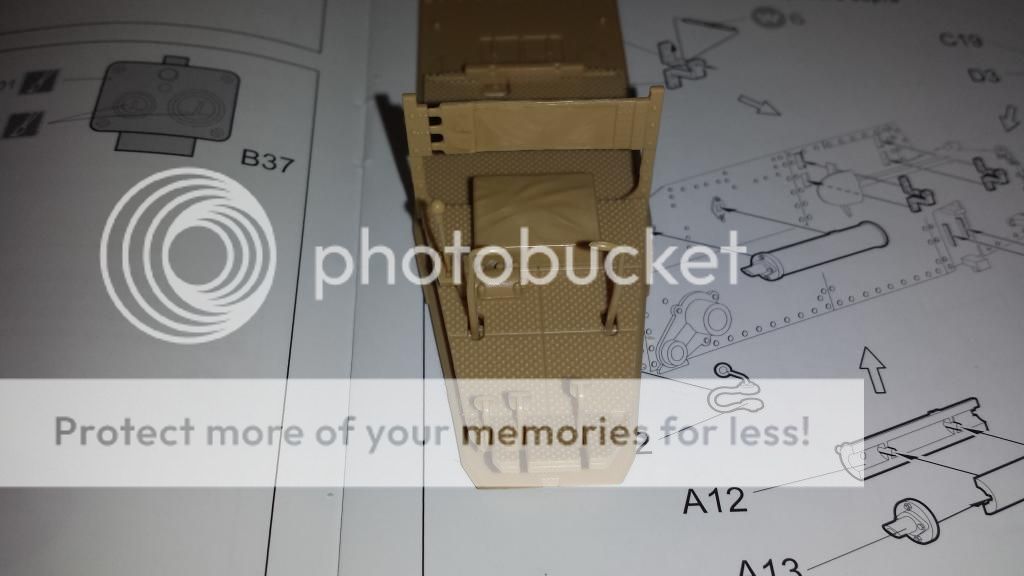
Ya see the numbers there beside parts A1 and B9? Well I was an idiot and didn't realize what they meant. Part A1 goes on before B9
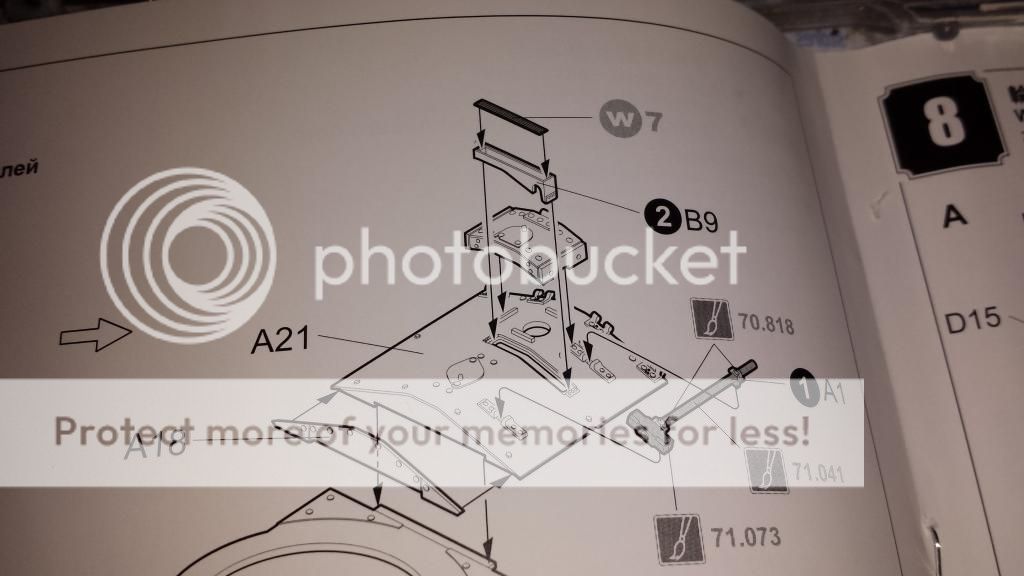
This is where I stopped. The hull is proving to be a real pain in my ass to get all the pieces to accept that they need to be with each other. Like one piece is dependent on three other pieces being at the correct spot

This kit is pretty deceiving. You look at it and go "Daww, it's adorable and it'll be a cinch to build" nope. Quite challenging. Plus it's just so damn small. It's not turning me off to Meng (thank goodness as all they're kits look amazing) it's just that this isn't a model for beginners.
This isn't the kit with the full interior yet it has more than a lot of kits.

Ya see the numbers there beside parts A1 and B9? Well I was an idiot and didn't realize what they meant. Part A1 goes on before B9

This is where I stopped. The hull is proving to be a real pain in my ass to get all the pieces to accept that they need to be with each other. Like one piece is dependent on three other pieces being at the correct spot

This kit is pretty deceiving. You look at it and go "Daww, it's adorable and it'll be a cinch to build" nope. Quite challenging. Plus it's just so damn small. It's not turning me off to Meng (thank goodness as all they're kits look amazing) it's just that this isn't a model for beginners.
I build bad models so you can feel good about yourself! 
Re: Meng Model 1/35 French FT-17 Light Tank (Riveted Turret)
Takom makes a 1/16 FT17; it was released just before Meng's first 1/35 version.robertw wrote:So far it is a great kit will exceptional detail. The damn thing is just so tiny. Someone needs to make a 1/16 version. It'd also kinda be hilarious to see it in 1/72. It would probably fit on someones thumb.Jamesday1998 wrote:damn that looks like a great kit i am looking forward to the build!
the kit is meng so it will go together nice but good luck any way!
I had a 1/72 version once; don't remember who made it but you're right; it fit right on my thumb tip
Jarod
"That which we persist in doing becomes easier, not that the task itself has become easier, but that our ability to perform it has improved."
-Ralph Waldo Emerson
On the bench
Bandai 1/144 Millennium Falcon Lando Calrissian version
"That which we persist in doing becomes easier, not that the task itself has become easier, but that our ability to perform it has improved."
-Ralph Waldo Emerson
On the bench
Bandai 1/144 Millennium Falcon Lando Calrissian version
- T3hGuppy
- Second Lieutenant

- Posts: 3467
- Joined: Wed Jun 12, 2013 11:20 pm
- Location: Bournemouth, UK
- Contact:

Re: Meng Model 1/35 French FT-17 Light Tank (Riveted Turret)
Another French piece.
Very cool.
Very cool.
Re: Meng Model 1/35 French FT-17 Light Tank (Riveted Turret)
In Coen's build he mentioned how the wheel assembly was a pain. I agree and thought I'd share my method on how to make the process less of a pain. The reason it's a pain is that the tracks and suspension are workable so you can't just cement the entire thing. Well I guess you could but that would be a bit pointless.
As you can see there are 10 pieces used in step 8A

You're going to want to take parts D15/19 and lay them on a flat surface like so. Although as you can see from the directions I got D19 and D14 backwards. Though I don't think it matters.
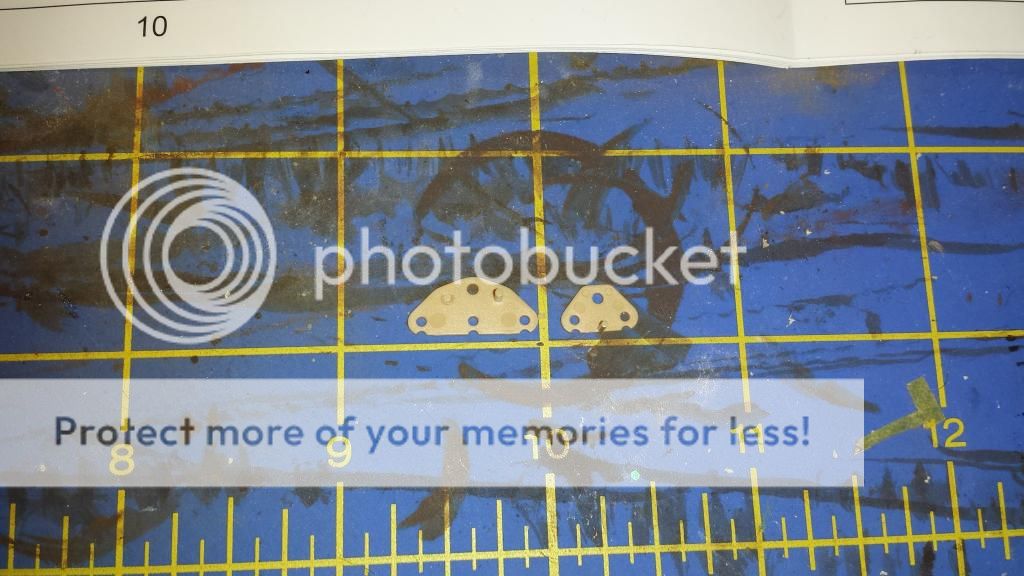
Then take part D20 and the wheels being E2 and place them like so.

Part D16; Now as far as actually cementing parts together it's a bit difficult to explain. There are pins and notches on each of the flat pieces. You fit the pins to the notches and it gives you a workable wheel assembly. It's pretty self explanatory if you ever get the kit.

Part D14

And here is a picture of the one of the wheel assemblies next to some Tamiya Extra Thin for scale. It's frickin tiny. This thing is just barely going to be larger than the turret on my Panther V...

Just do this for steps 8A, B, C, and D.
Hope this might help someone in the future.

As you can see there are 10 pieces used in step 8A

You're going to want to take parts D15/19 and lay them on a flat surface like so. Although as you can see from the directions I got D19 and D14 backwards. Though I don't think it matters.

Then take part D20 and the wheels being E2 and place them like so.

Part D16; Now as far as actually cementing parts together it's a bit difficult to explain. There are pins and notches on each of the flat pieces. You fit the pins to the notches and it gives you a workable wheel assembly. It's pretty self explanatory if you ever get the kit.

Part D14

And here is a picture of the one of the wheel assemblies next to some Tamiya Extra Thin for scale. It's frickin tiny. This thing is just barely going to be larger than the turret on my Panther V...

Just do this for steps 8A, B, C, and D.
Hope this might help someone in the future.
I build bad models so you can feel good about yourself! 
-
Jamesday1998
- Staff Sergeant

- Posts: 237
- Joined: Sun Sep 15, 2013 3:02 pm
Re: Meng Model 1/35 French FT-17 Light Tank (Riveted Turret)
nice start!
kutgw
kutgw
'no enemy plane will fly over the reich territory' Hermann Goering
my youtube
[url]channel/UCjsWN0yCUomvHeky43d8mog[/url]
my youtube
[url]channel/UCjsWN0yCUomvHeky43d8mog[/url]
- martin57
- Command Sergeant Major

- Posts: 897
- Joined: Tue Apr 01, 2014 8:44 pm
- Location: oundle, east northants.
Re: Meng Model 1/35 French FT-17 Light Tank (Riveted Turret)
nice kit best of luck 
Re: Meng Model 1/35 French FT-17 Light Tank (Riveted Turret)
Worked on the FT-17 some more over the weekend. I've got mostly everything assembled aside from the turret which is done in like 8 pieces.
Everything that I currently have assembled.
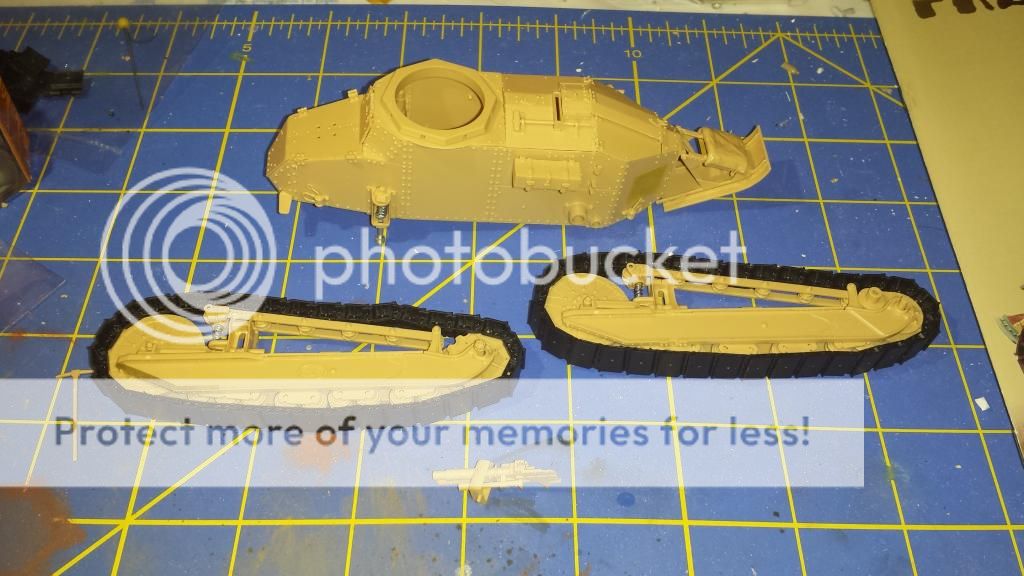
Close up of one of the running gears. Nearly pieces to both of them including the wheels

One thing this build is teaching me is that I'm pretty sure that I'd hate 1/72 armor.

Everything that I currently have assembled.

Close up of one of the running gears. Nearly pieces to both of them including the wheels

One thing this build is teaching me is that I'm pretty sure that I'd hate 1/72 armor.
I build bad models so you can feel good about yourself! 
- UKguyInUSA
- Second Lieutenant

- Posts: 3429
- Joined: Sun Mar 30, 2014 10:19 pm
- Location: New Hampshire, USA formerly Palm Beach, Florida, USA and Leicestershire, UK (until 1999)
- Contact:
Re: Meng Model 1/35 French FT-17 Light Tank (Riveted Turret)
Looking great so far 

WIP:: Tamiya 1/48 F4U-1A Corsair
Non-WIP::Eduard 1/48 Fokker DVII, Revell 1/32 Arado AR196 and 1/32 BF109G10 Erla,
Non-WIP::Eduard 1/48 Fokker DVII, Revell 1/32 Arado AR196 and 1/32 BF109G10 Erla,
Re: Meng Model 1/35 French FT-17 Light Tank (Riveted Turret)
Ism has become FT heaven! Looking great 
My Youtube Channel: http://m.youtube.com/user/MrBobsBuilds
Re: Meng Model 1/35 French FT-17 Light Tank (Riveted Turret)
Coming together very nicely indeed. Will be an interesting little tank!
Re: Meng Model 1/35 French FT-17 Light Tank (Riveted Turret)
Just wanted to say that there will be zero chance of me finishing this build unfortunately. New job coming up if all goes well and I'll have to go out of town for 10 days about 5 days before the build ends. 
I build bad models so you can feel good about yourself! 
Re: Meng Model 1/35 French FT-17 Light Tank (Riveted Turret)
Even if you don't make the time limit, just keep posting pictures when you can. This looks like a neat little tank!  Great work.
Great work.
Current Builds
Mk. A Whippet: http://www.intscalemodeller.com/viewtop ... 29&t=21073
Panzer IV Ausf D Buddy Build with SteveAFV: http://www.intscalemodeller.com/viewtop ... 29&t=19653
Mk. A Whippet: http://www.intscalemodeller.com/viewtop ... 29&t=21073
Panzer IV Ausf D Buddy Build with SteveAFV: http://www.intscalemodeller.com/viewtop ... 29&t=19653

